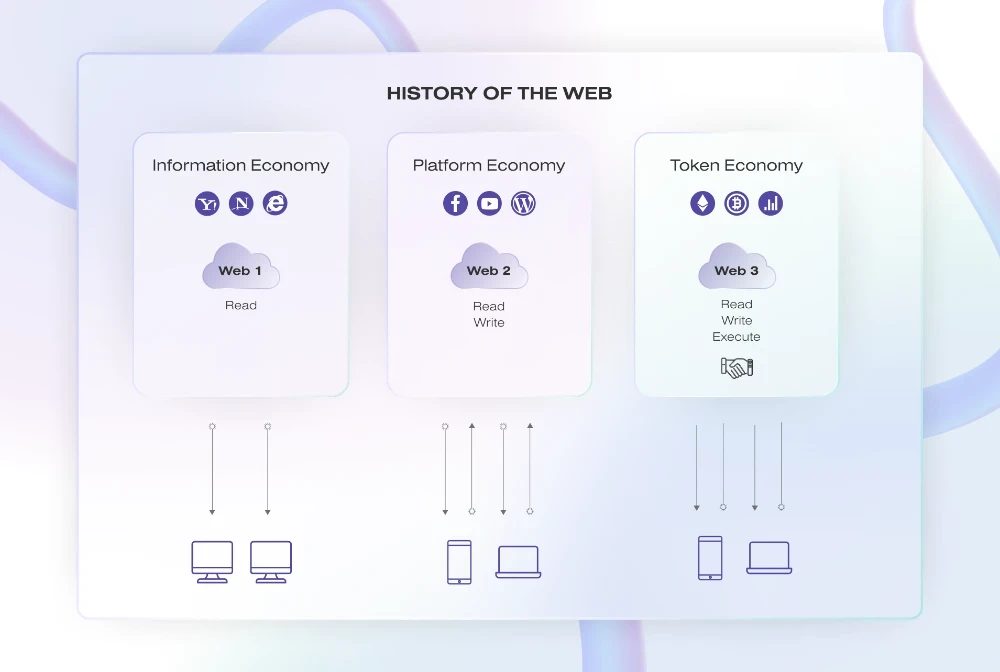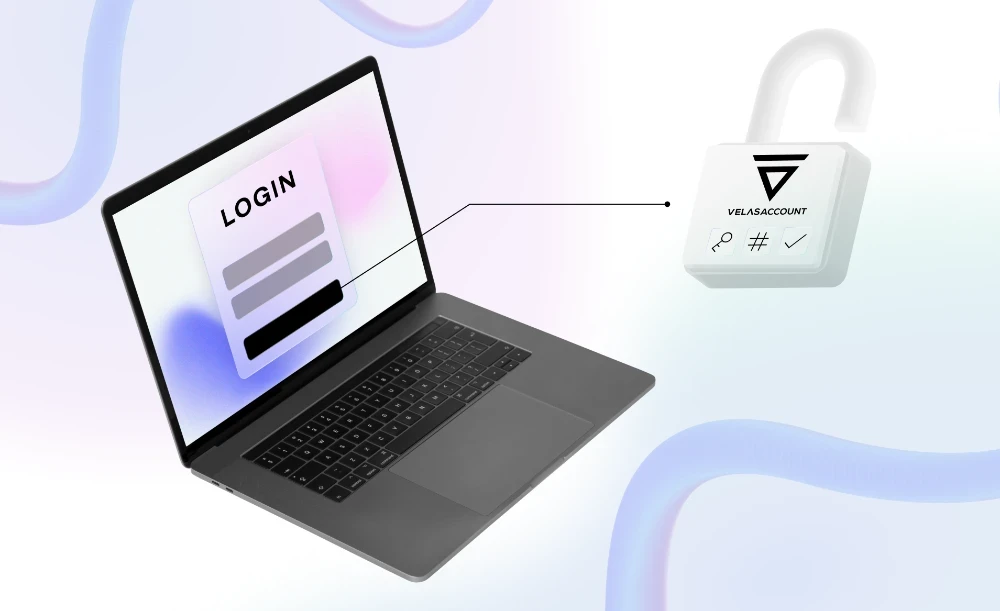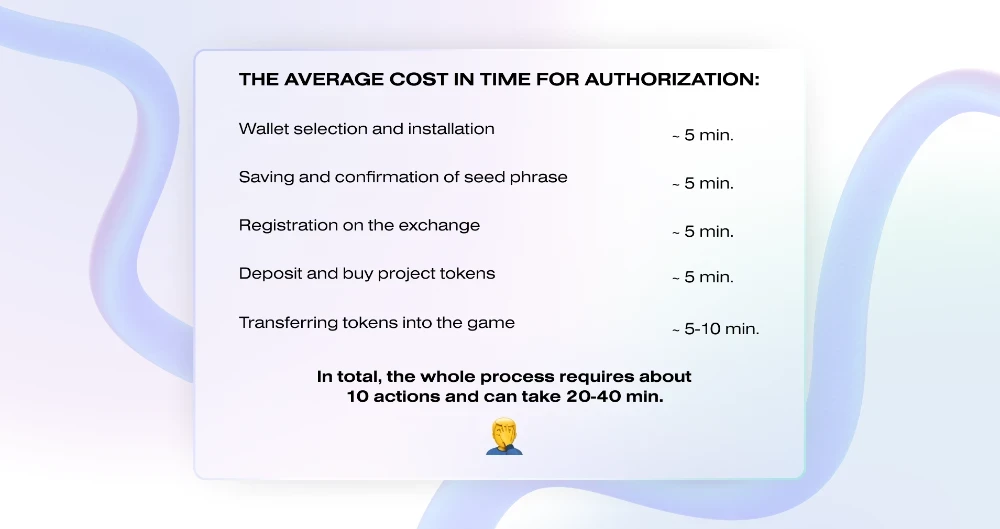Web3 Authentication: A Comprehensive Guide
Technology, Marketing 7 min reading
Content
Show- What is Web3?
- Why Do You Need Web3 Authentication?
- Web3 Wallets
-
Web3 Authentication and Velas Account
- The idea behind Velas Account
- Solution
- Conclusion
Explore more from Velas

Technology 1 min reading
Velas Expands Cross-Chain Bridging to AvalancheExciting news for the Velas community! We're thrilled to announce that Velas has extended its cross-chain interoperability by enabling bridging to Avalanche, a prominent blockchain platform known for its high throughput and low fees.

Technology, Engineering 1 min reading
Smart Contracts on SteroidsWelcome to the latest edition in our series, Exploring Velas' Innovative Technologies. Throughout this series, we delve into the cutting-edge technologies propelling Velas forward as a leading blockchain platform, reshaping the landscape...


Web 3 is a new development branch of the Internet that can make it more valuable and open to users. But if users want to interact with DeFi or the metaverse, then this requires Web3 authentication. To successfully implement dApps or other applications using the blockchain, developers must consider the presence of Web3 authentication in them. Web 3 allows users to use blockchain wallets for personal identification without collecting and tracking personal data. They can also associate their identity with an address through the IDX, ENS, and other protocols. And in order to prove ownership of an address, users can use a cryptographic signature, which allows Web3 authentication to be performed in just a few lines of code.
Let's take a closer look at Web 3 and why Web3 authentication is good.
What is Web3?
The emergence of the Internet as we know it can be traced back to the early 1990s. Just then, it begins to penetrate the masses and spread at an exponential rate. Telecommunication equipment and data transfer protocols are being improved, and the number of users is also growing.
The once closed special technology, originally created as a means of communication between the military among themselves, has become widespread, making its way into the civilian sphere. A quantum leap in development occurred with the creation of the first browsers - programs that allowed you to move between servers connected to the Internet. This is where Web 1.0 begins.
The idea behind Web 3.0 is to create an Internet that accurately interprets your input, understands what you're communicating, and allows you complete control over what type of content you want to consume. Also here you can interact with dApps, DeFi, and many other next-generation applications. And to ensure the security of your data, Web3 authentication is used here.
Characteristic features of Web 3.0:
- users should become full owners of their own content, provided that unauthorized censorship is impossible;
- users should be able to monetize their content;
- network users are actively involved in ensuring the functioning of the network, thus creating the infrastructure of this network. Active engagement is stimulated by value distribution algorithms (for example, through cryptocurrency);
- users will own their own personal data, with a high degree of anonymization of this data (data is stored in the blockchain, and not on the service of a centralized company, authorization in services can occur by signing digital certificates, providing tokens, performing hash functions, or in any other way conditioned by smart contracts);
- artificial intelligence, machine learning, blockchain, RDF, RDFS, OWL, and others are added to Web 2.0 technologies.

Why Do You Need Web3 Authentication?
Web3 authentication is an advanced login tool. If Web 2 websites use passwords and email to log in, then dApps and other Web 3 applications use crypto addresses. But all this is much more complicated than it seems because in order to ensure security, users need to deal with publicly available private keys, and this is not very convenient.
The solution to this problem is crypto wallets that allow you not only to store and use your cryptocurrency, but also use them as a Web3 authentication tool.
All Web 3 apps and websites work with blockchains, which provides a secure connection to crypto networks. With Web3 authentication, users can connect to specific networks and then interact with other authenticated users. That is why Web3 authentication is a key factor in every decentralized solution.
Let's find out why Web3 authentication is better than logging in with passwords, email or social networks

Web3 Wallets
Web3 wallets are software that allows you to interact with Web 3.0. This is the third generation of the Internet, where the interaction between the user and the Internet is fundamentally different from the usual. Applications running in such an environment are mostly decentralized and run on some kind of blockchain, such as Velas.
The main purpose of a Web3 wallet is to allow users to store their own funds without relying on third parties to store assets. Essentially, this leaves you in charge of your funds with complete freedom to do whatever you please. The only person in charge of your funds is you, which is quite a revolutionary concept when you consider that banks are ultimately in control of your money.
Unlike centralized wallets, DeFi users do not need to verify their identity or provide any background information if they have passed Web3 authentication. The anonymity of wallets appeals to many and means your identity will never be revealed.
Pros of wallets using Web 3.0 technology developments:
- powerful privacy protection;
- personal responsibility for the storage of funds - no need to trust this prerogative to companies;
- lack of a central point of control;
- lack of intermediaries;
- full data encryption;
- full control over your information;
- minimizing the number of hacks and information leaks - decentralization leads to the fact that an attacker needs to turn off the entire network in order to cause harm;
- unlimited access regardless of country, citizenship, income, or other sociological and demographic factors;
- failure-free operation - since there is no single point of failure, the risk of service disruption is minimal.
Data is stored on distributed nodes, and multiple backups prevent the server from crashing or being taken over by attackers.

Web3 Authentication and Velas Account
Velas Account is a solution for decentralized applications and websites that includes Web3 authentication. This is intended to make it easier for users to interact with blockchain services, leaving all the technical details behind the scenes.
The idea behind Velas Account
Velas Account allows users to avoid the boring and tedious registration process, which in turn is associated with seed phrases, passwords, and installation of third-party software. By relieving users of routine tasks, Velas Account allows you to increase conversion and improve the experience of interacting with services.
When users are interested in a project, they want to join it. But at this stage, they often encounter a complex authorization scheme. For example, you want to play a new interesting crypto game, so your path from getting acquainted with the project and directly starting the gameplay will look something like this:

In the end, you will need to perform about 10 manipulations, while you will spend about 30-40 minutes on this. In addition, blockchain projects may require payment of network fees. And the game hasn't started yet.
When you finally enter the game, another nuance will arise. The gameplay is recorded on the blockchain, which means you must approve and sign it, which in turn takes even more time and network fees.
Velas Account was created in order to solve all of the above tasks through the complex interaction of clients and services in Web 3.
Solution
Velas Account allows users to log in to any blockchain service in a few seconds. The whole system works as a standalone web platform, so the need to install third-party software is eliminated. Also, users no longer have to deal with memorizing or saving seed phrases, since all processes are protected and organized in such a way that the user can choose when to return to them.
The flexible settings that Velas Account offers allow you to fully control all interactions with blockchain services, while end-to-end transactions help to avoid a large number of confirmations and signatures from the user.
Also, in PM, the account does not store or collect personal data of users, observing the main principles of decentralized and anonymous use of the Internet. For greater security and convenience, you can create several accounts at once for each service separately.
On top of that, Velas is an EVM network that provides users with almost zero commissions and the whole process is fast and without any problems.
To learn more about Velas Account - click here
Velas Account documentation - click here
Conclusion
Web3, in fact, is a new Internet, where the storage and exchange of information, semantic content search, decentralized interaction of individuals and companies, regardless of their form of activity or other features, is implemented in a much more secure way through Web3 authentication. The world needs such technology, given the constant news about hacks of a centralized company.
Applications implemented within Web3 are able to erase the boundaries between online and offline, significantly advance the mechanisms of interaction between the Internet and the physical world.
Stay ahead of the curve
Add your email to get hand-tailored messages only. We say no to boring newsletters and spam!



